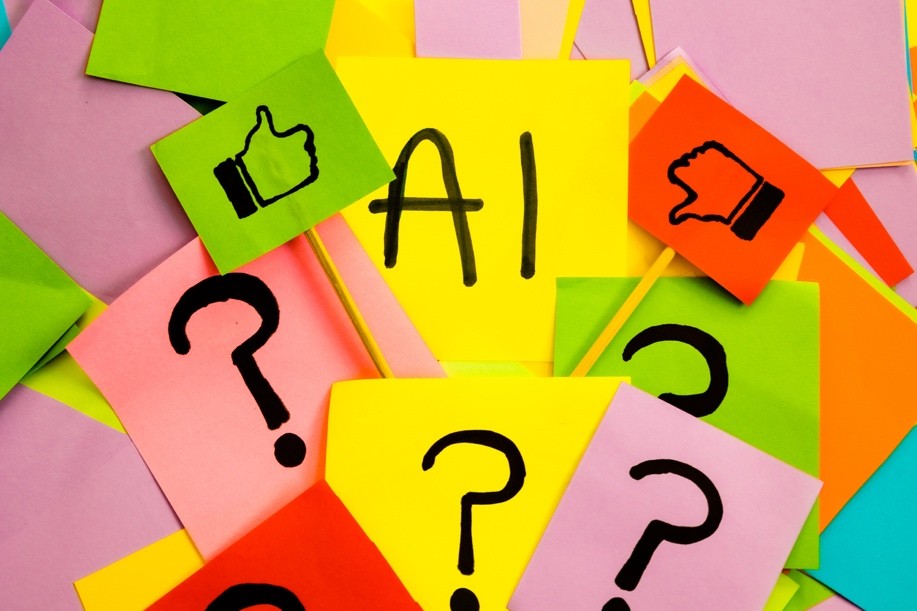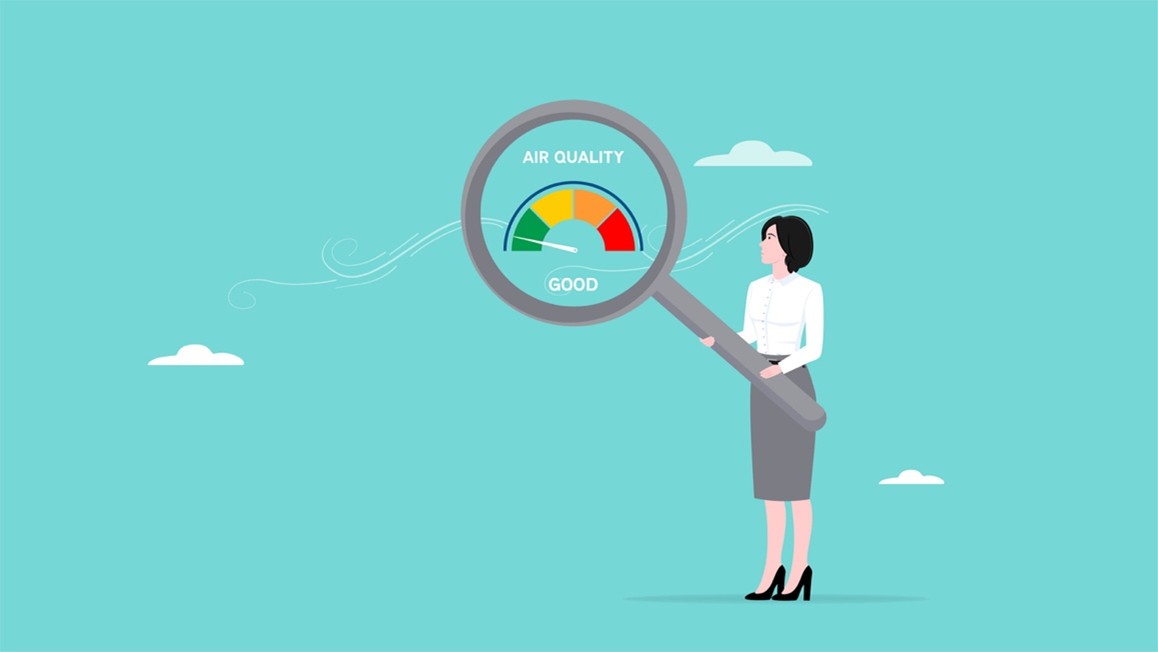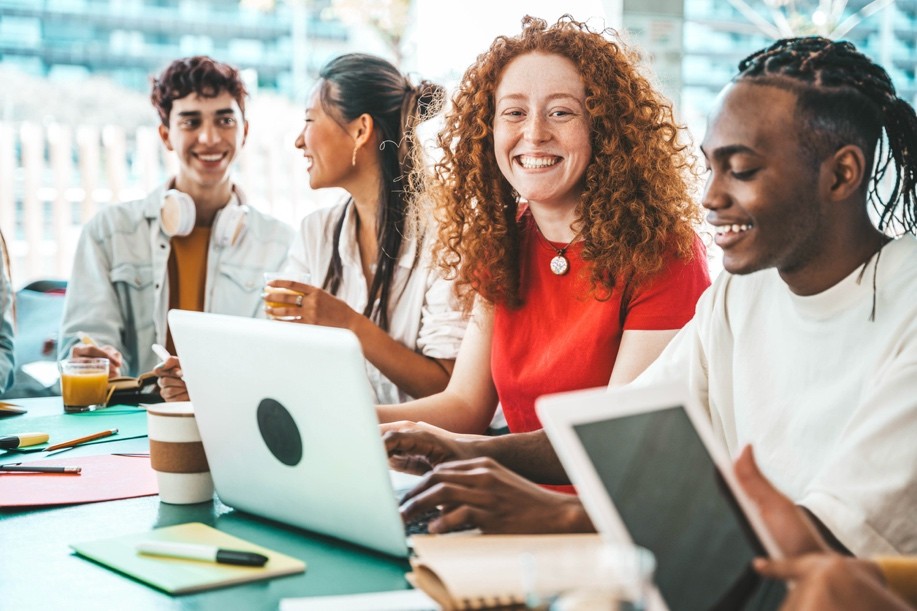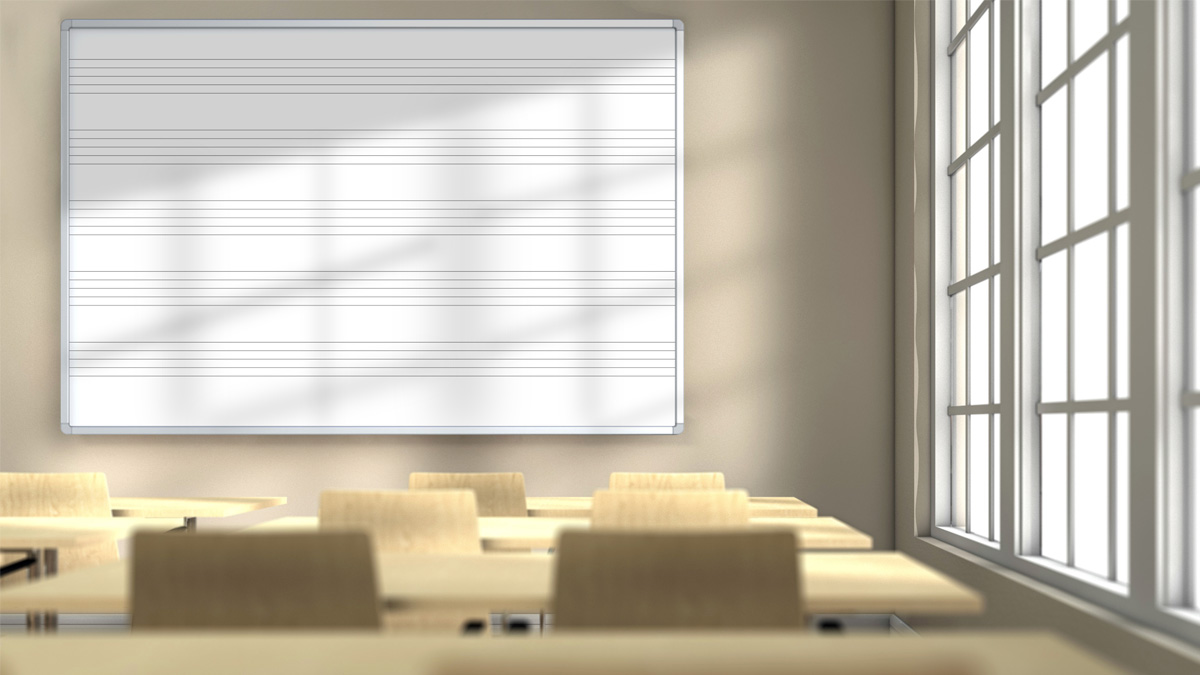As the demand for skills in science, technology, engineering, and mathematics (STEM) continues to surge, the way we design classrooms for these subjects must evolve. A modern STEM classroom is not just a room with desks and a whiteboard—it’s an adaptable, collaborative, and tech-equipped environment that reflects the dynamic nature of STEM fields. Integrating pedagogical best practices with thoughtful design, the ideal STEM classroom supports problem-solving, creativity, and real-world learning experiences.
Before you dig in, start by setting the scene. Picture the perfect day in a STEM classroom. What would it look like? Then prioritize learning goals, design for flexibility and flow, choose furniture matched to activities, select appropriate technologies, and, as always, ensure safety.
1) Start by Setting the Scene: A Day in a STEM Classroom
Imagine a group of eighth graders working on a challenge such as designing a device to help elderly people open jars more easily. The students begin in a collaboration zone, sketching ideas on table-mounted whiteboards. Some move to a prototyping zone, using a 3D printer to create parts. Others research materials online using tablets. Later, they test their prototypes in a science corner with scales and tension sensors. Finally, the teams present their designs in a mini amphitheater space with a projector and a few rows of tiered seating. This kind of project encapsulates STEM pedagogy in action—problem-solving, collaboration, iteration, and presentation—all supported by intentional classroom design.

2) Prioritize Pedagogy: The Foundation of STEM Learning
Before diving into the physical space, it’s crucial to understand what STEM pedagogy demands. At its core, STEM education emphasizes:
- Project-Based Learning (PBL)
- Collaborative and Inquiry-Based Approaches
- Integration Across Disciplines
- Real-World Applications
- Student-Centered Learning
This pedagogical framework calls for classrooms that are flexible, interactive, and adaptable to both group work and individual exploration. The classroom must support various teaching methods, including direct instruction, hands-on experimentation, peer-led inquiry, and digital simulations.
3) Design the Classroom for Flexibility and Flow
Modular Layouts
STEM classrooms thrive on movement and reconfiguration. Tables and chairs should be modular—preferably on wheels—so students can easily shift between individual work, small groups, and full-class discussions. Hexagonal or trapezoid-shaped tables allow more efficient grouping than traditional rectangular desks.
Zones for Learning Activities
Modern classrooms often benefit from designated zones:
- Collaboration areas with whiteboards, tables, and seating.
- Hands-on lab areas with durable surfaces, sinks, and safety equipment.
- Tech/media stations for coding, 3D modeling, or research.
- Presentation space with a projector, screen, and clear sightlines.
These zones enable students to rotate through different types of learning experiences within the same room, supporting varied instructional strategies.
Natural Light and Visibility
Where possible, classrooms should incorporate large windows or glass partitions. Natural light supports focus and wellbeing, while transparency between spaces encourages community and observational learning.
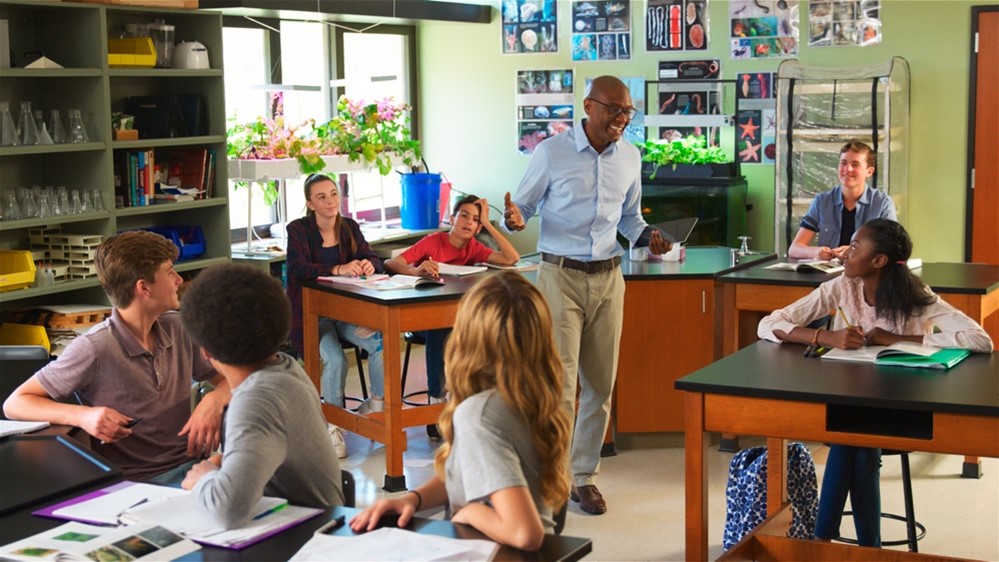
4) Furniture: Agile and Durable
- Reconfigurable Tables and Seating
- Furniture should be lightweight and easy to rearrange. Flip-top tables, stackable stools, and mobile workstations make it easy to adapt the space for different lessons.
- Writable Surfaces
- Desks and walls with whiteboard or glass surfaces support spontaneous brainstorming and group problem-solving. Writable surfaces democratize the classroom, encouraging contributions from all students.
- Ergonomic Seating
- STEM projects often require long periods of sitting, standing, or transitioning between the two. Adjustable-height tables and ergonomic stools or standing desks help accommodate a variety of needs and comfort levels.
- Storage Solutions
- STEM learning involves materials—tools, sensors, wires, prototypes, notebooks, and more. Well-designed, labeled, and accessible storage prevents clutter and saves instructional time.
5) Equipment and Technology: Tools for Exploration
Each STEM classroom should include:
- Laptops or tablets with sufficient computing power for simulations, coding, and digital creation.
- Interactive whiteboards or smart panels for dynamic teaching.
- Document cameras for displaying student work or live experiments.
- Maker Tools and Lab Equipment
Depending on the budget and curriculum, classrooms may include:- 3D printers and laser cutters for prototyping.
- Microcontrollers (e.g., Arduino, Raspberry Pi) for coding and robotics.
- Basic lab equipment (beakers, microscopes, scales) for physical sciences.
- Engineering kits like LEGOs, VEX Robotics, or K’NEX for hands-on building
Internet of Things (IoT) Readiness
Modern STEM education often intersects with data collection and smart technology. Classrooms should be Wi-Fi enabled, with ample outlets and charging stations to support connected devices.
6) Safety and Accessibility
STEM classrooms must also be safe and inclusive:
- Accessible furniture accommodates students with mobility or sensory needs.
- Clear safety signage and first-aid supplies are non-negotiable in lab areas.
- Air ventilation and noise control should be considered when housing equipment like 3D printers or power tools.
A Living Lab for Learning
The ideal STEM classroom is not a static setup but a living laboratory that adapts with new technology and teaching strategies. It’s a space that fosters curiosity, resilience, and teamwork—preparing students for the complexity of real-world problem-solving. As districts and schools invest in STEM education, integrating design, furniture, and equipment with pedagogy is essential to building the kind of learning environments that inspire the next generation of scientists, engineers, coders, and thinkers.
About the Author
 Leslie Stebbins is the director of Research4Ed. She has more than twenty-five years of experience in higher education and K-12 learning and instructional design. She has an M.Ed. from the Technology Innovation & Education Program at the Harvard Graduate School of Education and a Master’s in Library and Information Science from Simmons College.
Leslie Stebbins is the director of Research4Ed. She has more than twenty-five years of experience in higher education and K-12 learning and instructional design. She has an M.Ed. from the Technology Innovation & Education Program at the Harvard Graduate School of Education and a Master’s in Library and Information Science from Simmons College.



